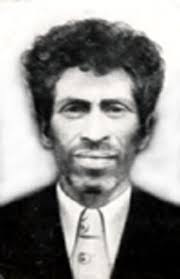(Khwit)
In Abhkazia, a country on the Black Sea claimed by Russia, in the 1880s, a supposed Bigfoot woman named "Zana" by the villagers, was taken captive and tamed. This story is vague and not well documented, so whether we are to believe a powerful Bigfoot woman who is a "wild thing" according to them, could be held captive is unique, but that they wanted to keep her in their clutches, seems rather unusual. Did a wild woman exist? Witnesses seemed to have supported some kind of feral woman being held. Now, let's look at the turns this saga takes.
A prince of the state took her in and then handed her over to one of his vassals who then handed her to a nobleman and he put her on his estate. If this chain of events is true, then this female oddity must have been interesting enough to want to acquire and yet difficult enough to want to pass her on to the next person. This sound feasible if she were a powerful wild woman.
The story goes on to say she dug holes to sleep in and for 3 years she lived wild but slowly tamed somewhat. She slept in the hole in the ground under the awning, fenced in and visitors poked sticks at her and she growled at them. She had black or dark gray skin, reddish dark hair covering her body with a long tousled mane atop her head. She did not speak, but made guttural sounds. She responded to her name, followed orders, and was afraid of retribution. In a closer description, she was massively muscular, broad, tall, and her hands worked and looked like any human's hands, but her toes were able to splay from the big toe. She had high cheekbones, flat nose, wide mouth, large teeth, low forehead and reddish eyes. This description is a fairly clear one. The toes are an odd feature, but the nose and wide mouth and low forehead and high cheekbones all fit the picture (above) of her son.
Over the years, her strength was impressive, able to outrun horses, swim hard, powerful, never losing teeth or showing ill health. She liked to wander the estate, drove the dogs off with a stick, and had a reported obsession with clanking and breaking rocks. She was trained to do menial tasks. I'm not certain about any Bigfoot offshoot wanting to remain domesticated. There would be nothing powerful enough to contain one and their entire lives are based on staying away from humans. The clanking rocks description is curious, though. That's an odd touch that doesn't seem fanciful.
Zana got pregnant from several different men and gave birth alone. She washed these half human babies in the cold spring water and they died. Eventually, the village women took the babies and cared for them; 2 daughters and 2 sons. They were fully functioning and assimilated into society as humans. The eldest son was Dzhanda, eldest daughter Kodzhanar, second daughter Gamasa, and youngest child, Khwit (picture above). I believe my biggest issue with this is that so many men would decide to take on a wild, powerful woman who surely would not just allow a small male to mount her and have his way.
Her son, Khwit (above), was said to be powerfully built and had dark skin. The faces of her children were said to resemble their human fathers. Khwit died at 65 or 70. He was described as normal, except quick temper and very powerful.
Archaeologists have attempted to find the grave of Zana. Although it was not found for certain her son, Khwit's grave, was believed to be known and his skull dug up to be examined by Moscow anthropologists, finding both features of modern man and something more archaic. The skull was larger than others of the region. It also was found that the back of the skull resembled homo sapiens, but the frontal area was much bigger and more paleo-appearing. DNA results, however, were reported to be modern human. Later on, a female skill of similar features was found, believed to be Zana, said to be human, as well, but whether this was truly her skull or not cannot be known, as her grave was not marked.
This has been a case colored by secrecy, a century of witnesses passing away, and difficulty in locating the bodies. Perhaps the only way to truly piece this case together is to listen to the people of that time who encountered Zana and see what consistencies they have in their descriptions, as well as looking for offspring of her offspring and looking at their DNA. The camps are divided that she was Neanderthal or that she was modern human, but there seems to be enough detail and enough power in this tale to believe that in the late 1800s, a wild female was subdued by a community that tolerated her presence while trying to tame her. Whether she was feral or Bigfoot (Almas - Russian version of Bigfoot) will likely never be known, but should a similar case occur today, documentation would surely be thorough with cell phone cameras, television, news reporters, and citizens lining up to see her.




Bizarre...too bad there isn't a photo of her.
ReplyDelete